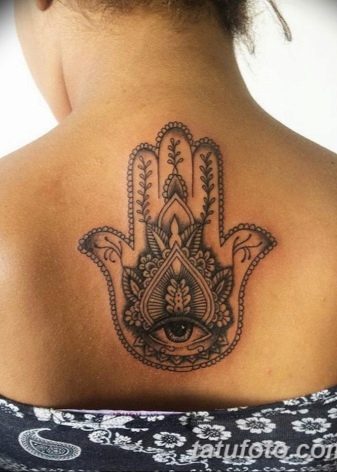All about the Hamsa tattoo
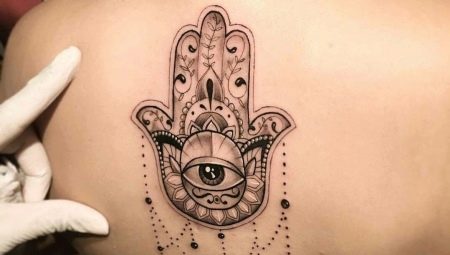
In any textbook on the history of images on the body and in the information base of a good tattoo artist, there is certainly a mention of a hand with two thumbs, but it is impossible to tell everything about the Hamsa tattoo even in a lengthy study, since it has many meanings. Traditionally, only one is mentioned - protection from the surrounding evil and misfortunes that persecute a person in everyday life. However, the magic symbol has many interpretations, which are determined by the location, size, attributes and even the gender of the person who chose the drawing to be applied to the body.
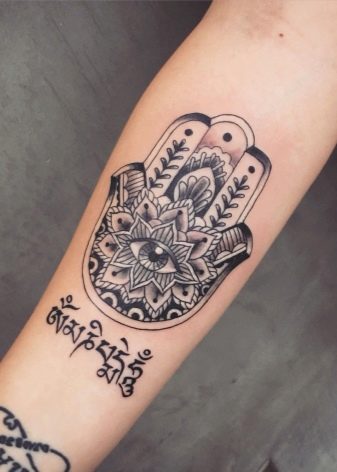
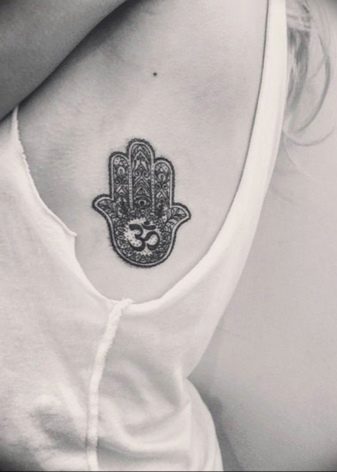
Peculiarities
The origin of the image, known as the Hamsa tattoo, is still the subject of controversy among scholars and esotericists. Some of them are sure that this is a symbol of the Phoenician goddess of the Moon, the Jews claim that the symbol indicates the five books of the Torah, the followers of Islam consider the sign to indicate the Prophet Muhammad and his descendants. In confirmation of the Arab etiology, a legend is cited about a girl who stirred the marshmallow on the fire with her hand because of the despair that gripped her at the news that her husband had brought a new wife into the house.
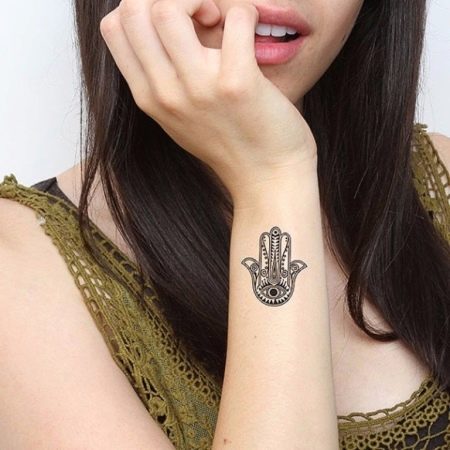
Semites participating in the peace movement use the sign to assert the common origin of world religions:
- "Hamsa" translated from Hebrew - five, denotes the number of fingers;
- "Hand of Fatima", hinting at the unfortunate girl, indicates Arab roots;
- the eye located in the center is stuffed to protect against evil and misfortune;
- despite the statements that the direction in which the palm is depicted does not matter, it has features in the meaning of the amulet;
- the eye or palm of a god may be given additional meaning or intended for different functions by the owner of the image, but they do not work for evil or aggressive people.
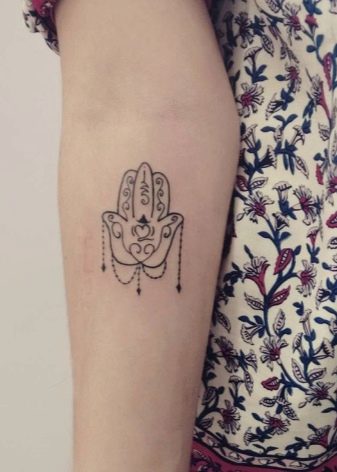
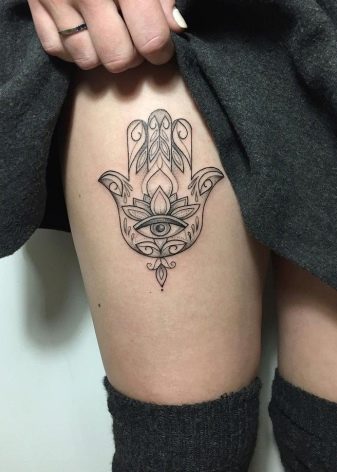
Interpretations depend not only on additional details, but also on the type of image, direction. Each owner may have his own ideas about the reasons why he chooses exactly Hamsa. Someone thinks that this is a symbol of eroticism, because the palm of the hand has two thumbs, they are confident that it is a symbol of power.
Followers of Judaism perceive it as a symbol of wisdom, which correlates with the Pentateuch or associate it with the five human senses.
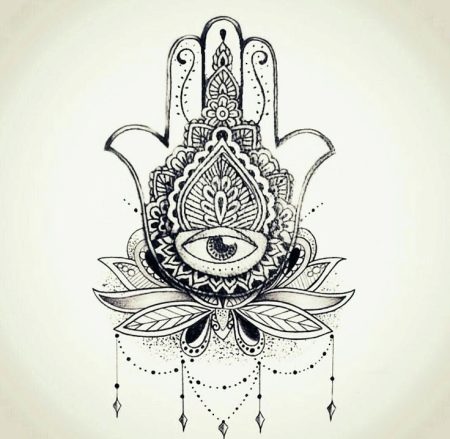
Who are they suitable for?
There are no particular restrictions on the choice, as well as in the interpretation of symbols. To give it the desired meaning, use location variations or additional details in the image. It is believed that Hamsa gives endurance and patience, sharpens intuition (if it denotes the five senses), can give a person power or protect him with divine protection. Faith and prayer, pilgrimage and charity are associated with the hand of Fatima.
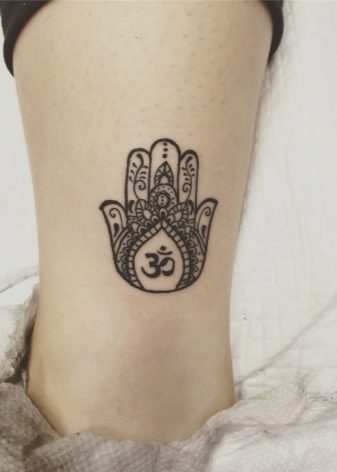
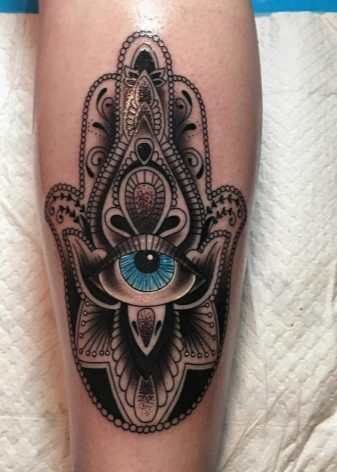
A man can choose a tattoo to gain protection (in some peoples it is believed that Hamsa can protect from injury or warn its owner about the impending danger).
For women who have a paired tattoo with a spouse in the form of Fatima's hand, this means the loyalty of a loved one. Single Hamsa gives patience and faith, helps to give birth to children, to protect from the evil eye, divination and damage. It is believed that the drawing of the palm of Fatima to a man by a tattoo artist - a woman, gives special properties to the image, enhances its magical characteristics in the aspect for which he chose Hamsa.
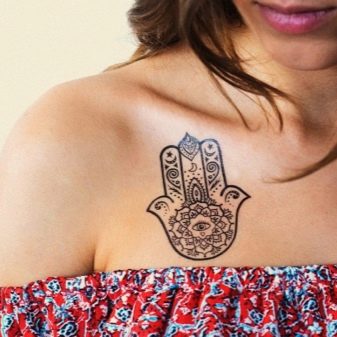
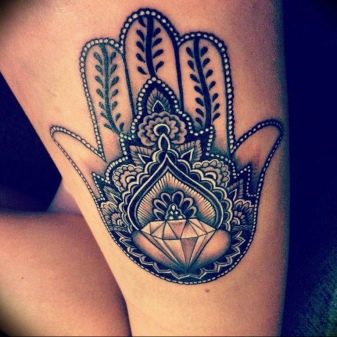
Types and sketches of tattoos
The meaning varies from the location of the picture and from additional attributes. That's why there are many sketches that are given a special, magical interpretation, and you should choose the one you like for these particular features. For example, for girls about whom envious people spread gossip, a large Hamsa on the back is suitable, protecting them from gossip, divination and ill-wishers. A woman's, in which the palm with two thumbs is facing down, is a great way to save the family hearth and safely give birth to children.

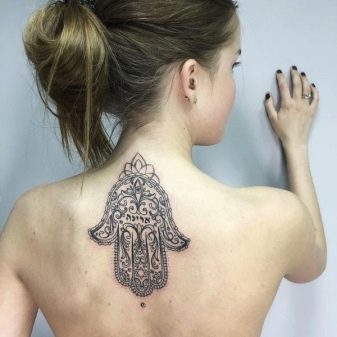
A small tattoo on the palm was previously applied to reveal the gift of foresight, but applied to the ankle, it loses its sacred meaning, since the classical rules state that it is better to apply Fatima's palm on the upper half of the body - here it works in full force.
You can find out what it means by carefully studying the generally accepted or deviating from the standard interpretation of the sketches. There are a huge number of them, and despite the proclaimed independence from nationality and religion, discrepancies in the interpretation may still remain in force.
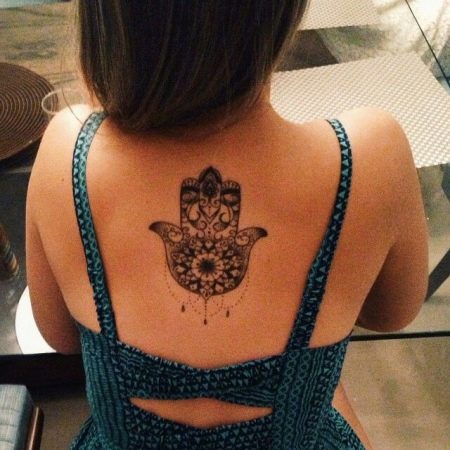
Traditional
It would be wrong to believe that this image refers exclusively to Eastern culture. The general meaning is given in three terms - luck, kindness and intuition. But this is too limited a meaning, since the open hand was considered even before the advent of religion as a gesture demonstrating the absence of weapons and the peaceful intentions of the owner of the hand. Such drawings were found on almost all continents, and they had a common idea - the protection of Providence, the protection of higher powers, and opposition to evil.

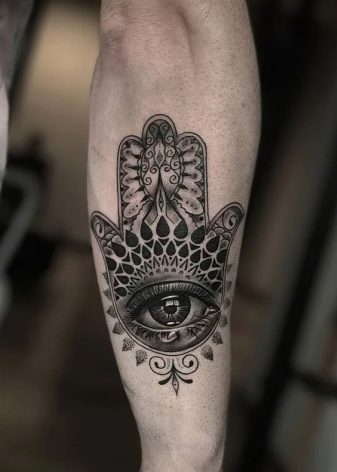
The traditional image is a hand with two thumbs and an eye in the palm of the hand. The top three fingers must be closed. For representatives of different beliefs and ethnic communities, even such a standard drawing can mean different things. Consider the interpretation of different ethnic groups. This image means y:
- Jews - the need to obtain knowledge from the Pentateuch;
- Arabs and Berbers - the intention to ward off corruption, to prevent other people's influence;
- the Egyptians Hamsa is depicted in the house to protect the family hearth;
- Indians of Mexico and America - an indication of the presence of supernatural abilities or a desire to acquire them.
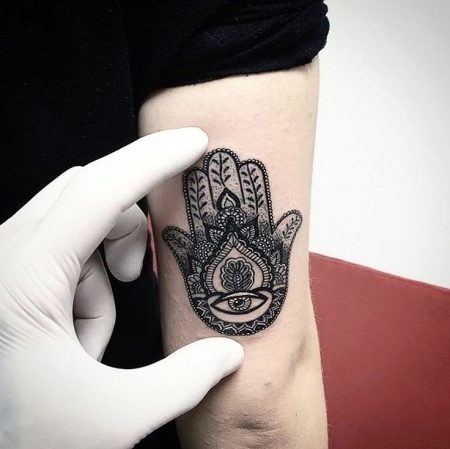
Sometimes in the traditional image there are details that are familiar to representatives of a religion or ethnic group. - it is the open eye in the center of the palm that indicates the Indians of the USA or Mexico, but it is found no less often among the Egyptians. The followers of the Prophet next to the palm depict a crescent moon, and the Hindus place variable inscriptions from the sacred books next to the Hamsa.
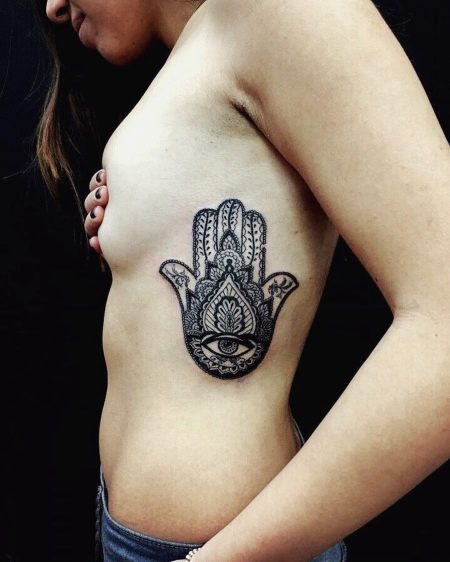
With additional elements
A trend that has spread at a later time, when the tattoo has become no information about national, religious or social affiliation. The emergence of tattoos as a means of self-expression, decorativeness, led to a change in traditional patterns, familiarization with the already available options for additional elements that carry an important semantic load.
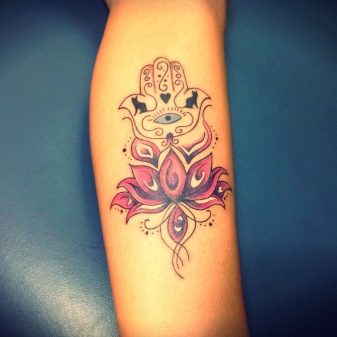

The accession to the hand of Fatima of fish, the star of David or other element of particular spiritual value for the owner of a magical drawing means for him reliable protection, the acquisition of a talisman not only against damage, but sometimes also against material weapons.

It is believed that the protective properties of the amulet increase if stars are depicted next to it. For a woman, a heart means a strong marriage and mutual love. But with flowers you need to be careful: sometimes it is not only the appearance, but even the number of petals that matters.

Styles and colors
The traditional view of Hamsa involves a solution exclusively in dark colors - black, purple or blue. The use of dark gray or brown is acceptable. Despite the recent tendency to use bright elements, scarlet and red details are considered inappropriate because they destroy the protective powers of the amulet.


Recommended styles are minimalism, graphics, watercolor and old school. However, more and more distribution of other options has been noticed - for example, leaving the main image in black and white, adding bright elements in the form of flowers, bouquets, colorful splashes. When applying a tattoo, the use of modern techniques is recommended. This, according to tattoo artists, somewhat modifies the generally accepted tradition, but does not affect the general meaning and role of the selected image.
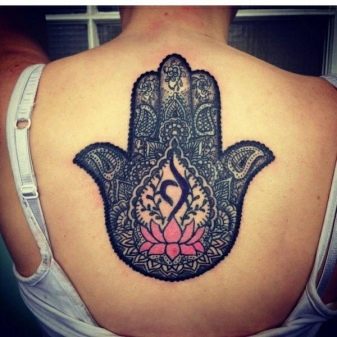
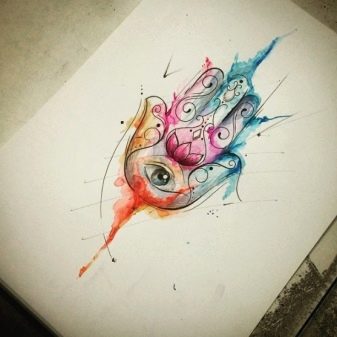
Such a broad outlook is the result of an awareness of the universal human symbolism of Hamsa, its universality in cultural heritage on different continents, in beliefs and global implications.
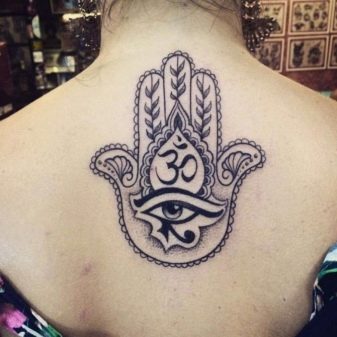

Accommodation options
In the same traditional sense, the hand of Fatima should be located on the upper body, but it is not necessary to hide it from prying eyes in order to achieve a magical purpose and get the desired result. Modern recommendations are sometimes the opposite - there is a statement that the image can be placed on any part of the body, and the choice is due to the desire to flaunt the tattoo or hide it from prying eyes.

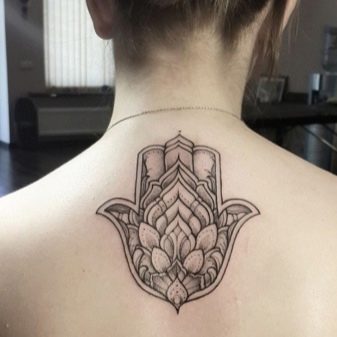
Before choosing a specific location, you need to carefully study the traditional location guidelines:
- a tattoo on the palm is appropriate if it is done by lovers or a person wants to gain the ability to clairvoyance;
- there are no restrictions for the dotwork style, even in the use of red, since the manner of application means imitation;
- on the wrist, small in size, looks appropriate, but usually done in monochrome;
- on the back, shoulder, forearm, a voluminous, detailed composition in watercolor or old school style looks great.
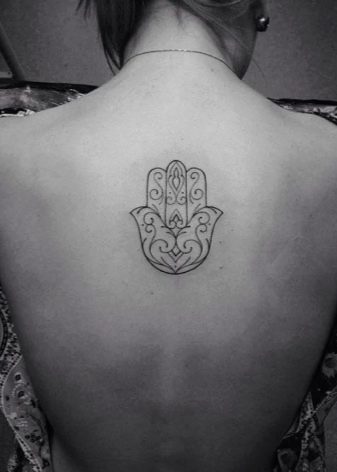

Despite the advice to use miniature or minimalism in neck images, you can think of the good old traditions when the great hand of God was depicted on the side or back of the neck. People believed that it was such a Hamsa that would protect its owner from an arrow or knife.
A voluminous and colorful tattoo between the shoulder blades will ward off divination, the evil eye and even a curse from a beautiful woman. You can enhance the magical properties of the amulet by choosing stars, the eye of Horus (only on the always open part of the body) or an Indian elephant.
